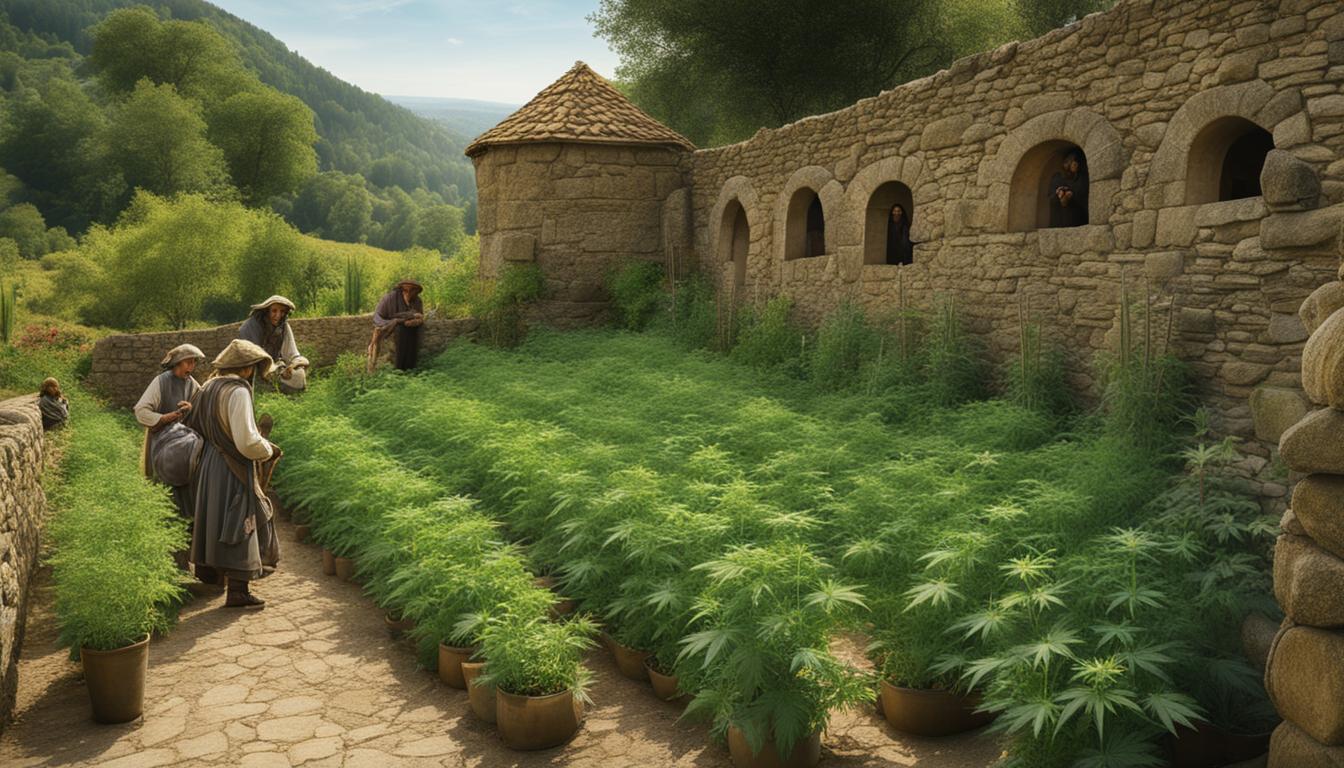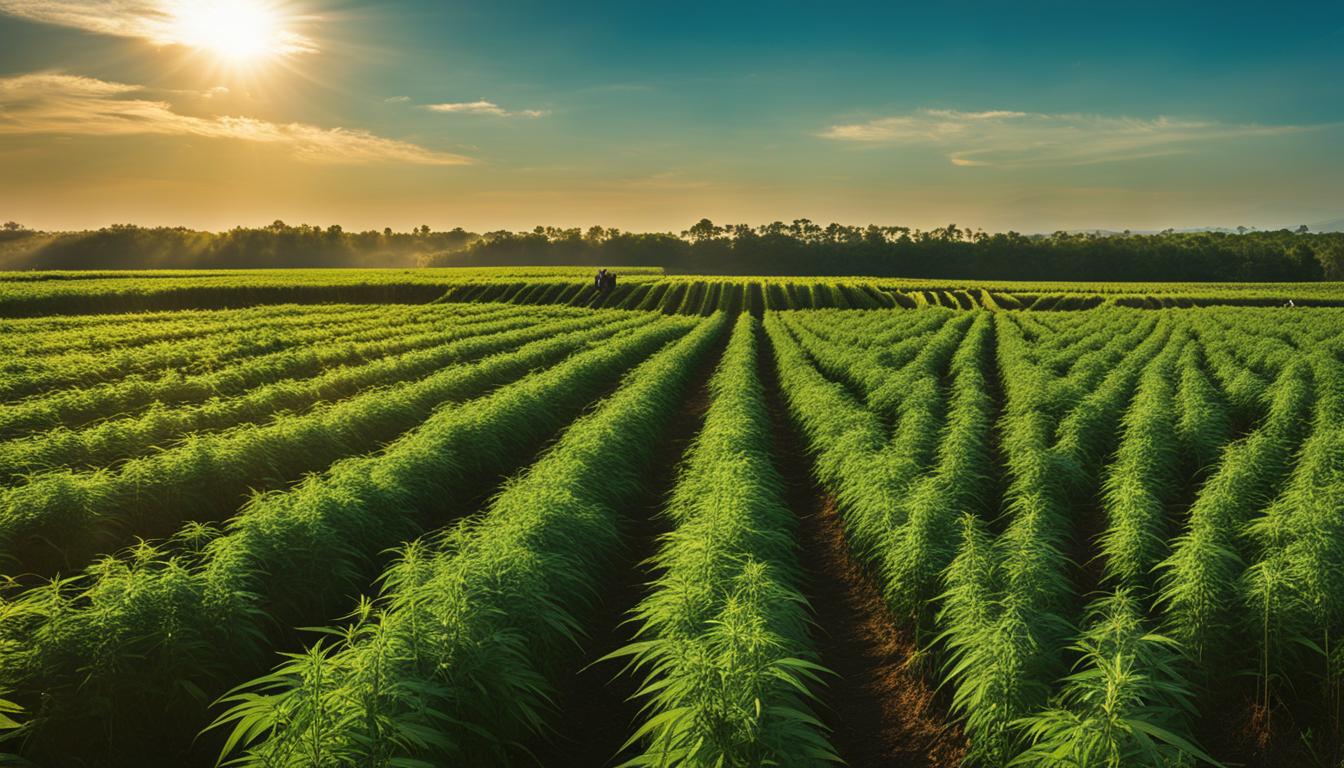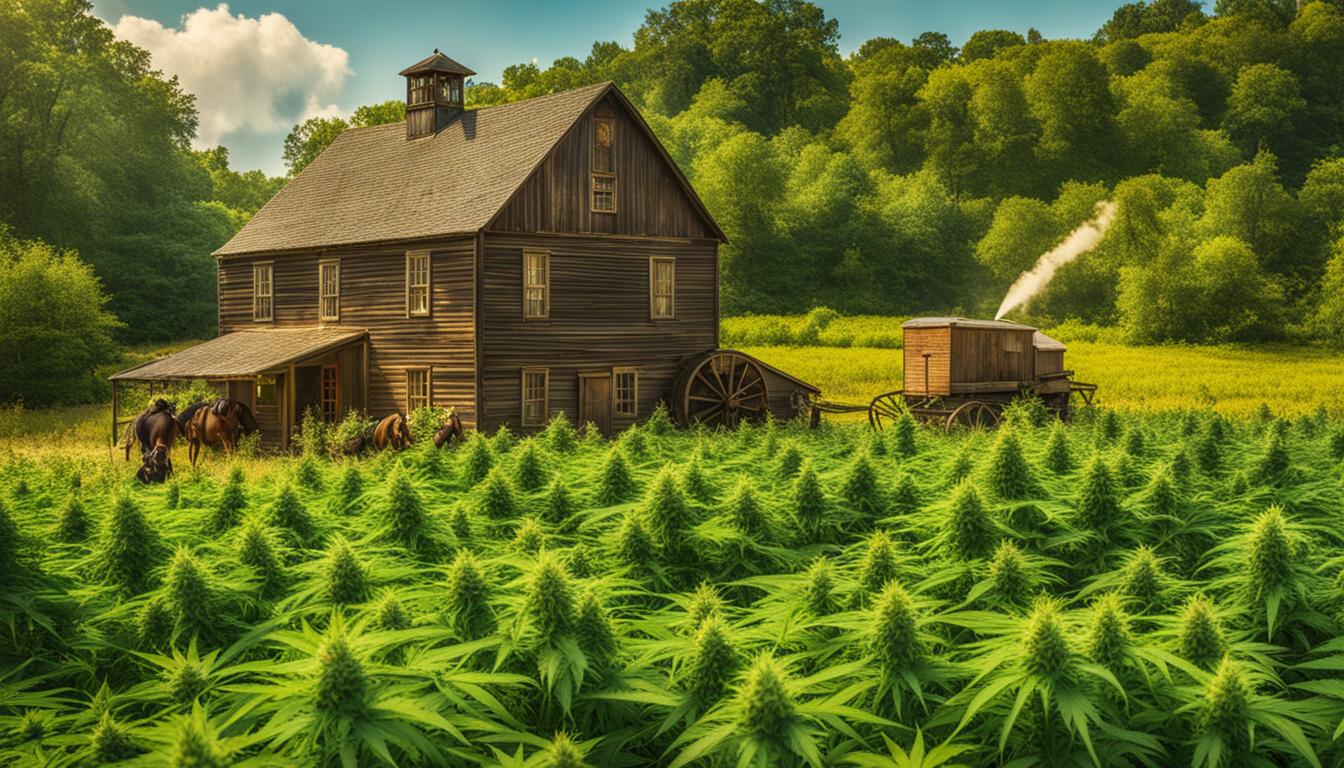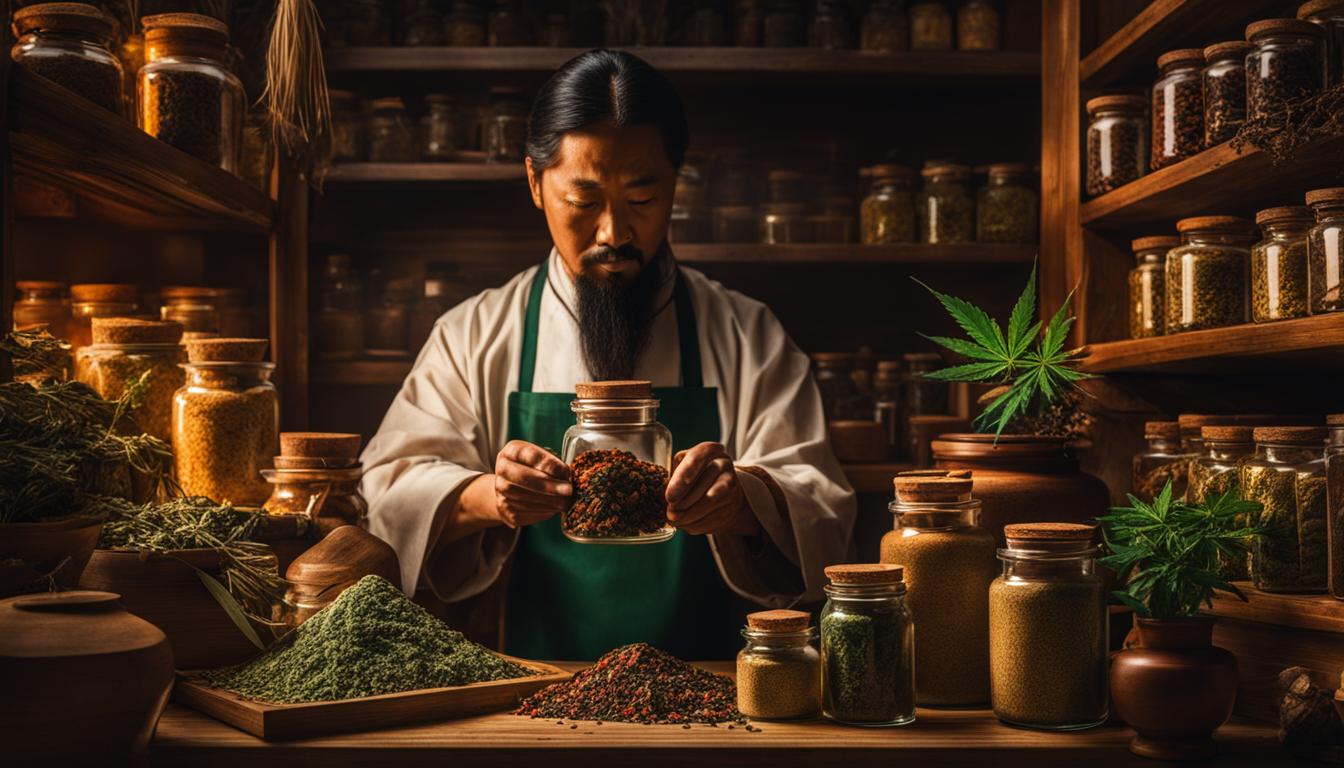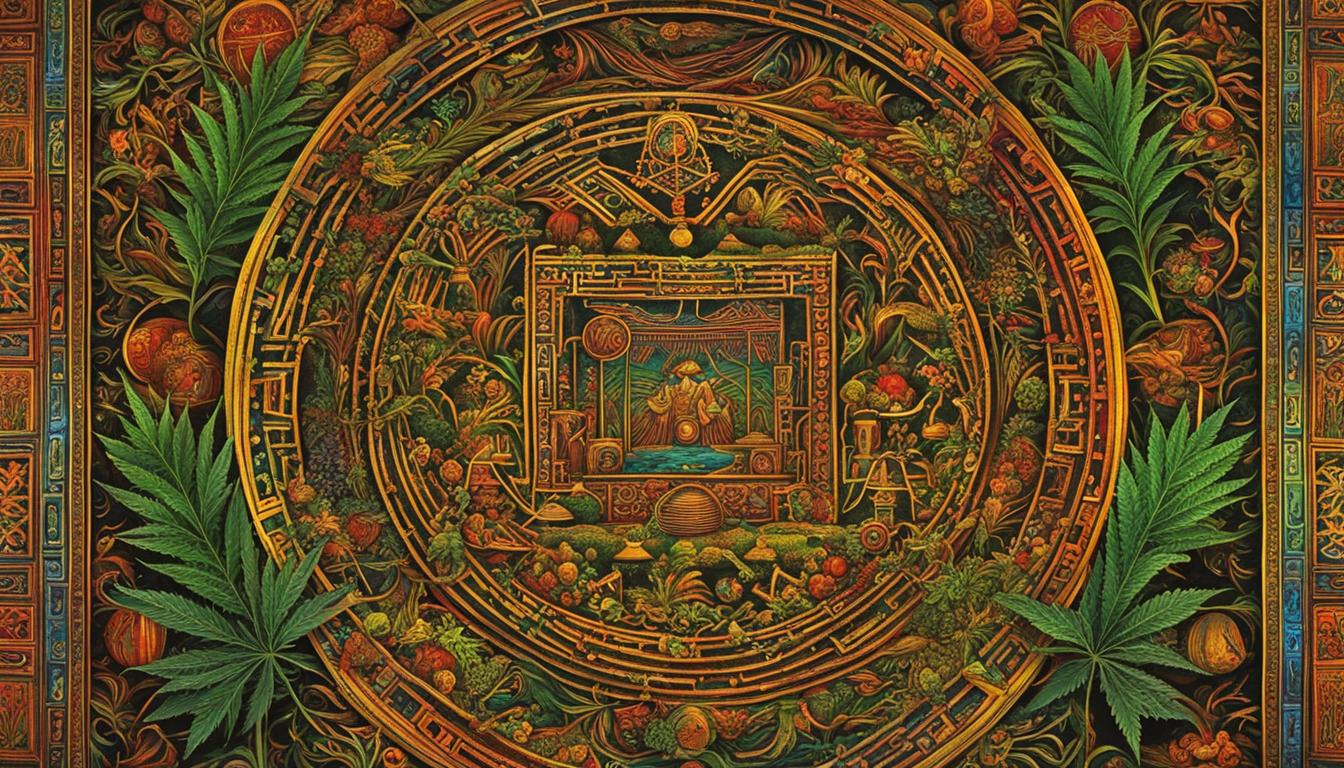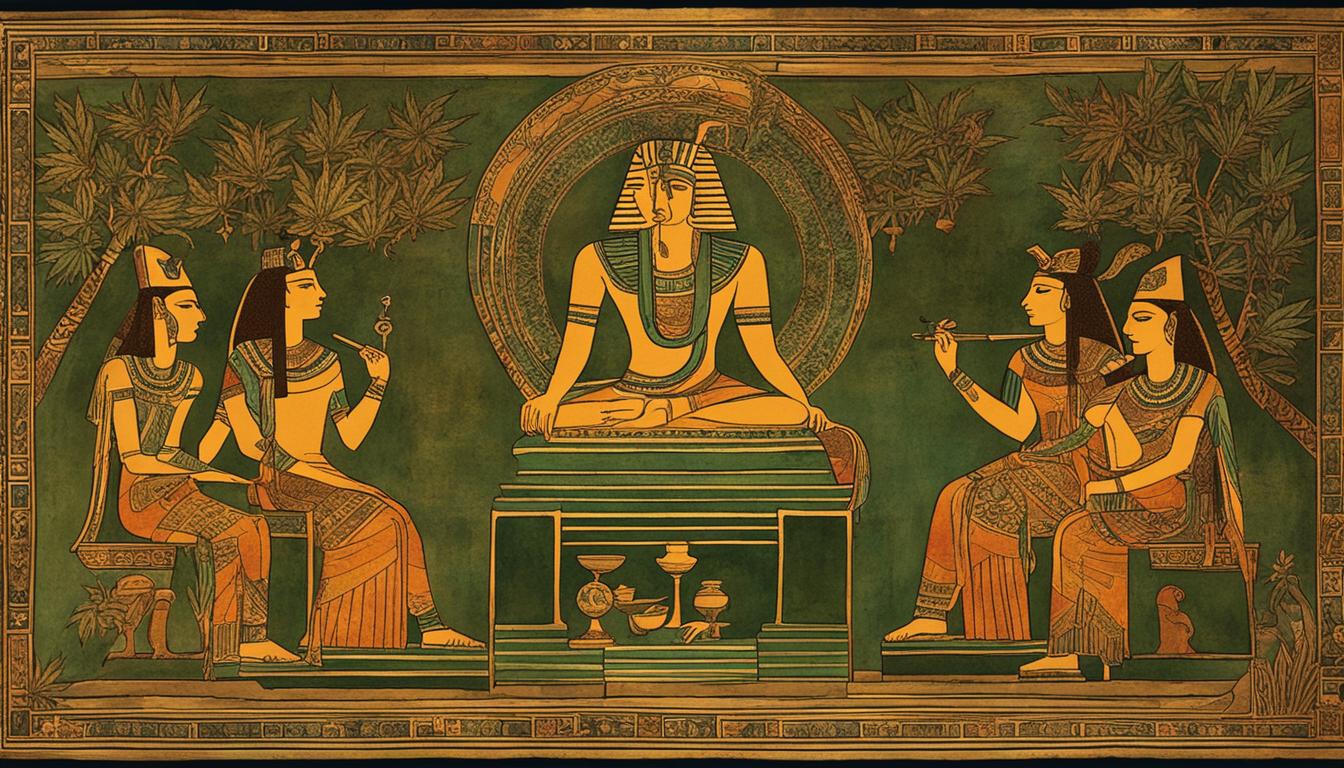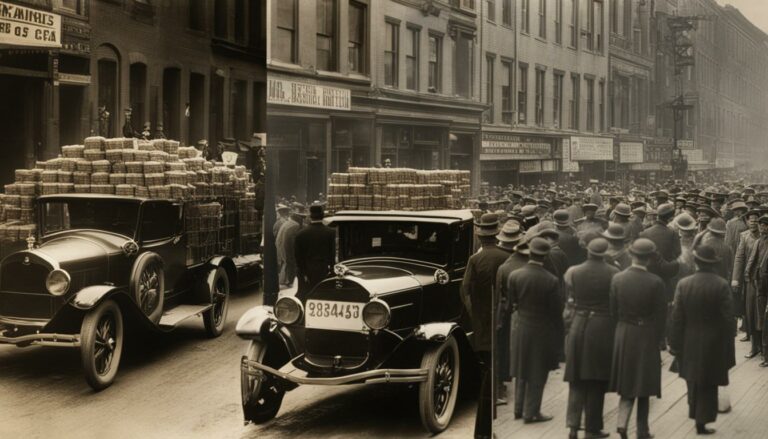Medieval Europe’s Relationship with Cannabis
Journey back in time and discover the fascinating world of cannabis in Medieval Europe. Digging deep into history, we unravel the secrets of its historical uses, cultivation, and its significant role in medieval society. Brace yourself for an inspirational exploration of the medieval hemp industry, the traditional uses of cannabis in medicine, and the captivating practices of a bygone era.
Step into a world where cannabis thrived, influencing every aspect of medieval life. From the cultivation of this remarkable plant to its indispensable place in European trade and economy, cannabis left an indelible mark on history. Delve into the historical cannabis practices and discover the traditional uses that shaped medieval Europe.
Uncover the mysteries of cannabis in medieval medicine, as it provided relief from pain, calming effects, and treated various ailments. Explore the versatility of this extraordinary plant as it addressed everything from skin conditions to mental health issues, leaving a lasting impact on European medicine.
Witness its integration into religious and cultural practices, as cannabis played a sacred role in the production of holy anointing oil and became an essential part of daily life. Marvel at the enduring legacy of cannabis in Europe’s past, as we reevaluate its historical significance and explore its potential contributions to society today.
Join us on this captivating journey through time, as we unravel the complexities of cannabis in Medieval Europe. Immerse yourself in the rich and diverse history of this remarkable plant and gain valuable insights into the power of nature and its profound societal impact.
The Historical Background of Cannabis Use in Europe
In order to understand the significance of cannabis in Medieval Europe, it is important to explore its historical background. Cannabis has a long and rich history in ancient civilizations, dating back thousands of years. The use of cannabis in Europe can be traced back to the time of the Roman Empire, where it was introduced and cultivated for various purposes.
“Cannabis cultivation and knowledge of its medicinal properties spread throughout Europe after the fall of the Roman Empire.”
During the Middle Ages, the cultivation of cannabis became more widespread as people began to experiment with its medicinal properties. Monasteries played a crucial role in promoting the cultivation and use of cannabis, as monks cultivated the plant and incorporated it into their medicinal practices.
The Role of Monks in Cannabis Cultivation and European Medicine
Monks played a vital role in the cultivation and dissemination of cannabis knowledge during the Middle Ages. They grew cannabis plants in monastery gardens and used them to produce medicines that were widely used throughout Europe. These medicines were used to treat various ailments and were an integral part of European medicine during that time.
- Cannabis was known for its pain-relieving properties, making it a valuable resource for treating conditions such as toothaches and joint pain.
- It was also used as an anti-inflammatory agent, making it effective in treating skin conditions and wounds.
- Furthermore, cannabis was utilized to address mental health issues, including anxiety, depression, and insomnia.
The cultivation and use of cannabis in Medieval Europe played a significant role not only in medicine but also in trade and culture. Cannabis was a valuable commodity that was traded both locally and internationally, contributing to the development of Europe’s economy.
| Cannabis in Medieval Europe | Key Points |
|---|---|
| Historical Background | – Cannabis use originated in ancient civilizations – Introduced to Europe during the Roman Empire – Cultivation and knowledge spread during the Middle Ages |
| Monks’ Role | – Monks cultivated cannabis in monastery gardens – Used cannabis in medicinal practices – Played a crucial role in disseminating knowledge |
| European Medicine | – Cannabis used for pain relief and anti-inflammatory purposes – Addressed mental health issues – Valuable resource in European medicine |
| Trade and Culture | – Cannabis was a traded commodity – Contributed to Europe’s economy – Integrated into European culture |
The historical background of cannabis use in Europe provides valuable insights into its significance during Medieval times. It highlights the role of ancient civilizations and the Roman Empire in introducing cannabis to Europe, as well as the crucial role played by monks in its cultivation and dissemination. Additionally, it demonstrates the ways cannabis was interconnected with European medicine, trade, and culture.
Medicinal Uses of Cannabis in Medieval Europe
In Medieval Europe, cannabis was highly valued for its versatile medicinal properties. It was widely recognized as a potent pain reliever, offering relief for ailments such as toothaches, joint pain, and menstrual cramps. The plant’s anti-inflammatory properties made it particularly effective in treating various skin conditions, including burns and wounds. Beyond physical ailments, cannabis was also used to address mental health issues, providing relief for anxiety, depression, and insomnia.
The medicinal applications of cannabis in Medieval Europe were vast, showcasing the plant’s versatility as a healing agent. It was even recommended as a treatment for epilepsy in some medical texts, further emphasizing its potential therapeutic benefits. Whether it was used externally as an ointment or internally as an herbal remedy, cannabis played a significant role in alleviating a wide range of medical conditions during that time.
To better understand the medicinal uses of cannabis in Medieval Europe, let’s explore some examples of its applications:
The Versatility of Cannabis as a Medicinal Plant
| Condition | Treatment |
|---|---|
| Toothaches | Chewing or applying cannabis leaves directly to the affected area for pain relief. |
| Skin Conditions | Applying cannabis-based ointments or poultices to burns, wounds, and other skin irritations for their anti-inflammatory properties. |
| Mental Health Issues | Consuming cannabis-infused teas or tinctures to alleviate symptoms of anxiety, depression, and insomnia. |
| Epilepsy | Using cannabis preparations as a potential treatment for seizures. |
These examples highlight the widespread use of cannabis as a medicinal plant in Medieval Europe. Its natural properties made it a valuable resource for addressing a wide range of health concerns, providing relief and improving the well-being of individuals across the continent.
Cannabis Cultivation and Trade in Medieval Europe
In Medieval Europe, the cultivation of cannabis was widespread and had significant economic importance. This versatile plant was grown in various regions, including present-day France, Germany, and the British Isles, contributing to regional growth and prosperity. Its economic significance lay in the production of textiles, paper, and rope, making it a vital resource for the European economy.
The cultivation of cannabis in Medieval Europe played a crucial role in the production of textiles, paper, and rope, contributing to the growth and prosperity of the European economy.
The strong fibers of the cannabis plant were highly valued, and its textiles were sought after for their durability and versatility. These textiles were used to create clothing, shoes, and other everyday items. Cannabis paper, known for its strength and resistance to decay, was widely used for writing and book production, contributing to the spread of knowledge and education.
The trade of cannabis and its products was not limited to local markets but extended to international trade. European merchants exported cannabis textiles, paper, and rope to other regions, contributing to the growth of trade networks and the exchange of goods. The cultivation and trade of cannabis played a significant role in connecting regions and fostering economic relationships.
| Product | Importance |
|---|---|
| Textiles | Highly valued for their durability and versatility |
| Paper | Known for its strength and resistance to decay, widely used for writing and book production |
| Rope | Vital resource for various industries, including maritime and construction |
The cultivation and trade of cannabis in Medieval Europe not only bolstered the economy but also fostered cultural exchange. The commerce of cannabis products facilitated the spread of ideas, technologies, and cultural practices across regions. Thus, cannabis served as a driving force behind the interconnectedness of Medieval European societies.
Regional Growth and Economic Impact
The cultivation of cannabis in Medieval Europe led to regional growth and prosperity. It provided a valuable resource for the production of textiles, paper, and rope, which were in high demand. The economic impact of cannabis cultivation extended beyond local markets, with the trade of cannabis products contributing to the growth of international trade networks. This cultivation not only fueled economic development but also fostered cultural exchange and connectivity among Medieval European societies.
The Role of Cannabis in Religious and Cultural Practices
Cannabis had a significant role in religious and cultural practices in Medieval Europe. One of its notable uses was in the production of holy anointing oil, which held great religious significance. The oil, infused with cannabis, was used in various Christian rituals, including baptism and the ordination of priests. It symbolized purification, sanctification, and the presence of the divine.
The use of cannabis extended beyond religious rituals and permeated daily life in Medieval Europe. The plant was utilized in the production of everyday items such as clothing, shoes, and household goods. Cannabis fibers were strong and durable, making them ideal for creating textiles that could withstand everyday use. This widespread integration of cannabis into daily life highlights its importance and versatility in European society during that time.

“The use of cannabis in religious and cultural practices demonstrates its profound influence and value in Medieval Europe. From the sacred anointing oil to everyday items, cannabis had a multi-dimensional impact on society during that time.”
The Production of Holy Anointing Oil
| Component | Religious Significance |
|---|---|
| Cannabis | Symbolized divine presence, sanctification, and purification |
| Olive Oil | Represented peace, healing, and the Holy Spirit |
| Other Herbs and Spices | Added fragrance and additional symbolic meanings |
The production of holy anointing oil involved cannabis, olive oil, and other herbs and spices. Each component had its own religious significance, and when combined, they created a potent and sacred substance. The anointing oil played a vital role in Christian rituals, creating a connection between the physical and spiritual realms.
The religious significance of cannabis in Medieval Europe highlights the deep-rooted cultural and spiritual importance of the plant. It served as a bridge between the divine and the earthly, symbolizing purity, healing, and the presence of God.
Legal Regulations and Perceptions of Cannabis in Medieval Europe
In Medieval Europe, the cultivation and use of cannabis were subject to varying legal regulations, influenced by factors such as local customs, religious beliefs, and economic considerations. These regulations differed from region to region, leading to a complex legal landscape surrounding the plant. While some areas encouraged the cultivation and use of cannabis, others imposed stricter regulations.
Despite these legal variations, cannabis remained widely available and was used by people from all social classes. This challenges the misconception that cannabis use during this period was solely for recreational purposes. In reality, cannabis had a range of medicinal and practical applications, making it an important resource for people from all walks of life.
There are also misconceptions about the extent of cannabis use in Medieval Europe and the societal impact it had. Some may believe that cannabis played a minor role in medieval society, but the widespread availability and diverse uses of the plant indicate otherwise. Cannabis was cultivated for textiles, paper, and rope, and it had a significant presence in European trade and economy. Its integration into religious and cultural practices further highlights its importance in medieval society.
| Key Points | Details |
|---|---|
| Legal Regulations | Varying regulations in Medieval Europe, influenced by local customs, religious beliefs, and economic considerations. |
| Social Classes | Cannabis used by people from all social classes, challenging the misconception that it was exclusively for recreational purposes. |
| Misconceptions | Misunderstandings about the extent of cannabis use and its societal impact in Medieval Europe. |
Overall, the legal regulations and perceptions surrounding cannabis in Medieval Europe were diverse and often misunderstood. While the plant was subject to varying restrictions, it remained widely available and was utilized for its medicinal, practical, and cultural significance. It is important to consider the full scope of cannabis use in this period and acknowledge its complex relationship with society.
The Decline of Cannabis Use in Later European History
The use of cannabis in Europe began to decline in later European history due to changing attitudes, the emergence of new medical theories, and the rise of tobacco as a popular recreational substance. As the centuries passed, societal views towards cannabis shifted, leading to a decline in its widespread use and cultivation.
One of the main factors contributing to the decline of cannabis use was the changing attitudes towards the plant. As society became more influenced by new cultural and religious perspectives, the perception of cannabis shifted from being valued and integrated into daily life to being viewed with skepticism and even fear. New medical theories emerged, challenging the traditional uses of cannabis and promoting alternative remedies and treatments.
The rise of tobacco as a popular recreational substance also played a significant role in the decline of cannabis use. Tobacco, introduced to Europe from the Americas, quickly gained popularity and began to overshadow cannabis as the substance of choice for relaxation and socializing. The widespread usage of tobacco, with its addictive properties and perceived cultural prestige, led to a decline in the popularity and availability of cannabis.
Overall, the decline of cannabis use in later European history can be attributed to changing attitudes, the emergence of new medical theories, and the rise of tobacco as a popular recreational substance. These factors, combined with shifting societal values, led to cannabis being overshadowed and eventually marginalized in European society. However, the rich and diverse history of cannabis in Medieval Europe serves as a reminder of its enduring legacy and the lessons learned from its societal impact.
Table: Comparing Factors Contributing to the Decline of Cannabis Use
| Factors | Contributing Factors |
|---|---|
| Changing Attitudes | Shift in societal values and cultural perspectives towards cannabis. |
| New Medical Theories | Emergence of alternative remedies and treatments. |
| Rise of Tobacco | Popularity of tobacco as a recreational substance overshadowed cannabis. |
Modern Perspectives on Cannabis in the Context of Medieval Europe
In recent years, there has been a resurgence of interest in the rich and diverse history of cannabis in Medieval Europe. Scholars and researchers have begun to reevaluate their perceptions of this ancient plant, shedding new light on its multifaceted role in medieval medicine, trade, and culture.
As modern society continues to explore the potential benefits and uses of cannabis, understanding its historical significance in Europe provides valuable insights. The reevaluation of cannabis in the context of Medieval Europe encourages us to reconsider the plant’s potential contributions to society today. From its medicinal properties to its economic impact, there is much to learn from the past.
“Cannabis in Medieval Europe offers a fascinating glimpse into the diverse ways in which this versatile plant was integrated into everyday life. Through an examination of historical texts, trade records, and cultural artifacts, we can now appreciate the significant role that cannabis played in various aspects of medieval society. The resurgence of interest in this rich history allows us to challenge preconceived notions and explore the potential benefits of cannabis in modern times.” – Dr. Elizabeth Johnson, Cannabis Historian
The Changing Perspectives
One of the key reasons for the resurgence of interest in cannabis in Medieval Europe is the shifting perceptions surrounding cannabis worldwide. As societies reevaluate their stance on cannabis and its potential medical and economic benefits, the historical context becomes increasingly important. By studying how cannabis was cultivated, traded, and used in medieval times, we can gain valuable insights into its long-standing significance and potential future contributions.
By examining the past with a fresh perspective, we can uncover historical practices and knowledge that may be applicable today. The rich history of cannabis in Medieval Europe serves as a reminder of the enduring impact and potential of this remarkable plant.

Exploring the Past for a Brighter Future
The reevaluation of cannabis in the context of Medieval Europe allows us to draw inspiration from the past. By reexamining historical practices and perspectives, we can challenge misconceptions and explore innovative approaches to its use. The enduring legacy of cannabis in Europe’s past teaches us about the power of nature and its potential impact on society.
With a renewed interest in the history and potential benefits of cannabis, modern society has the opportunity to learn valuable lessons and make informed decisions. By embracing the rich and diverse history of cannabis in Medieval Europe, we can pave the way for a brighter future.
The Lasting Legacy of Cannabis in Europe’s Past
The story of cannabis in Medieval Europe reveals its enduring legacy, teaching us valuable lessons about the power of nature and its societal impact. Despite the decline of cannabis use in later European history, its historical significance remains undeniable. From its cultivation and trade to its medicinal uses and integration into religious and cultural practices, cannabis played a vital role in shaping the fabric of Medieval European society.
One of the key lessons we can learn from the history of cannabis in Europe is the power of nature. Throughout the Middle Ages, cannabis demonstrated its versatility as a plant by providing materials for textiles, paper, and rope. Its strong fibers were highly valued and widely traded, contributing to the economic development of the region. The enduring legacy of cannabis reminds us of the immense potential that lies within the natural resources we often take for granted.
“The history of cannabis in Medieval Europe teaches us about the power of nature, the importance of knowledge, and the ways in which it can contribute to society.”
Furthermore, the story of cannabis in Medieval Europe highlights the lessons we can learn from our past. It reveals the significant role cannabis played in medicine, providing pain relief, anti-inflammatory properties, and treatments for various ailments. This historical knowledge can inspire us to explore the potential therapeutic applications of cannabis in modern medicine, facilitating breakthroughs and benefiting society at large.
The Societal Impact of Cannabis in Medieval Europe
Lastly, the lasting legacy of cannabis emphasizes its societal impact. Cannabis was not confined to a particular social class but was used by people from all walks of life. This widespread use suggests that cannabis was valued for its practical benefits and cultural significance, transcending social boundaries. Understanding this historical context challenges misconceptions about cannabis and encourages a more nuanced perspective on its role in society today.
| Enduring Legacy | Lessons Learned | Power of Nature | Societal Impact |
|---|---|---|---|
| Cannabis’ continued influence on various aspects of European culture and history. | The knowledge gained from the historical uses of cannabis in Medieval Europe and its potential applications in modern medicine. | The significant role of cannabis as a versatile natural resource for textiles, paper, and rope. | The widespread use of cannabis across all social classes, challenging misconceptions and provoking a reevaluation of its societal impact. |
Conclusion
The story of cannabis in Medieval Europe is a testament to its historical significance and the complex relationship it had with European society. Throughout that time, cannabis played a vital role in various aspects of life, from its cultivation and trade to its medicinal uses and integration into religious and cultural practices. The widespread availability and versatile nature of cannabis made it a valuable resource in Europe’s past.
While the use of cannabis declined in later European history, modern perspectives have sparked a renewed interest in understanding its place in Medieval Europe. Scholars and researchers are reevaluating the importance of cannabis and shedding new light on its multifaceted role in medicine, trade, and culture during that period.
The enduring legacy of cannabis in Europe’s past teaches us valuable lessons about the power of nature and our relationship with it. It reminds us of the historical significance of this plant and invites us to reconsider our perceptions and deepen our understanding of its potential contributions to society today. The complex relationship between Medieval European Cannabis and the people who cultivated, traded, and used it is a fascinating narrative that continues to captivate and inspire.
FAQ
What was the role of cannabis in Medieval Europe?
Cannabis had a multifaceted role in Medieval Europe, being cultivated for textiles, ropes, and paper, as well as for medicinal purposes. It was integrated into religious and cultural practices and had a significant impact on trade and the economy.
How widespread was the cultivation of cannabis in Medieval Europe?
Cannabis cultivation was widespread throughout Medieval Europe, with regions such as France, Germany, and the British Isles being major producers. It was highly valued for its fibers, which were essential for textiles, paper, and rope production.
What were the medicinal uses of cannabis in Medieval Europe?
Cannabis was used as a pain reliever for conditions such as toothaches, joint pain, and menstrual cramps. It also had anti-inflammatory properties and was used to treat skin conditions, mental health issues, and even epilepsy.
How did cannabis integrate into religious and cultural practices in Medieval Europe?
Cannabis was used in the production of holy anointing oil, which held sacred significance in Christian rituals. It was also part of daily life, being used to make clothing, shoes, and other household goods.
What were the legal regulations surrounding cannabis in Medieval Europe?
The regulations varied from region to region, influenced by factors such as local customs, religious beliefs, and economic considerations. However, cannabis remained widely available and used by people from all social classes.
Why did the use of cannabis decline in later European history?
The decline can be attributed to changing attitudes, the emergence of new medical theories, and the rising popularity of tobacco as a recreational substance.
What is the modern perspective on cannabis in the context of Medieval Europe?
There has been a resurgence of interest in the history of cannabis in Medieval Europe, leading to a reevaluation of its importance and potential contributions to society today.
What is the lasting legacy of cannabis in Europe’s past?
The enduring legacy of cannabis reminds us of its impact and potential for positive change. It teaches us about the power of nature, the importance of knowledge, and its role in societal development.
What can we learn from the history of cannabis in Medieval Europe?
The history of cannabis in Medieval Europe teaches us valuable lessons about the power of nature and our relationship with it. It also highlights the significance of historical and cultural perspectives in shaping our understanding of substances like cannabis.

